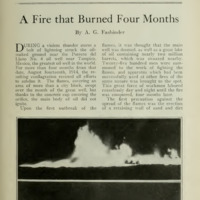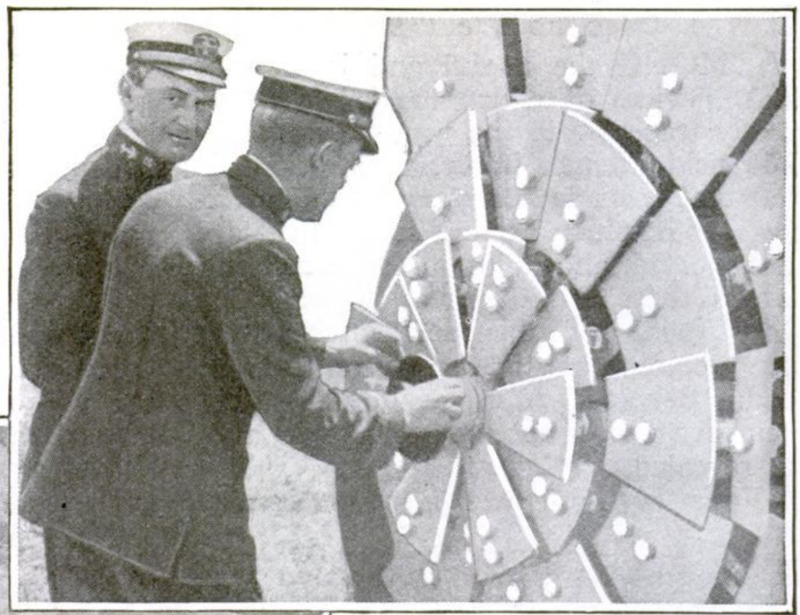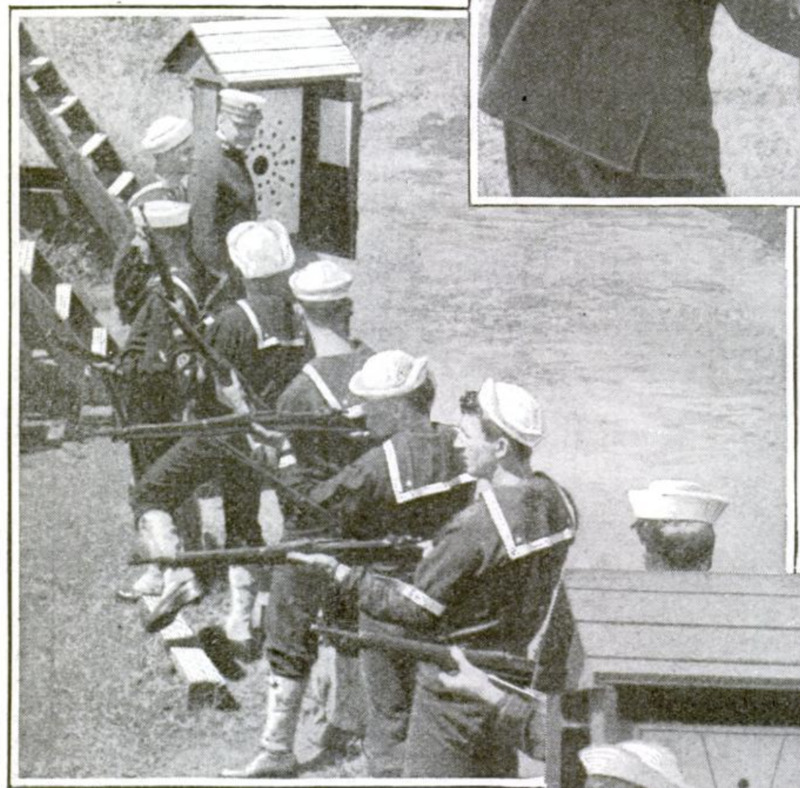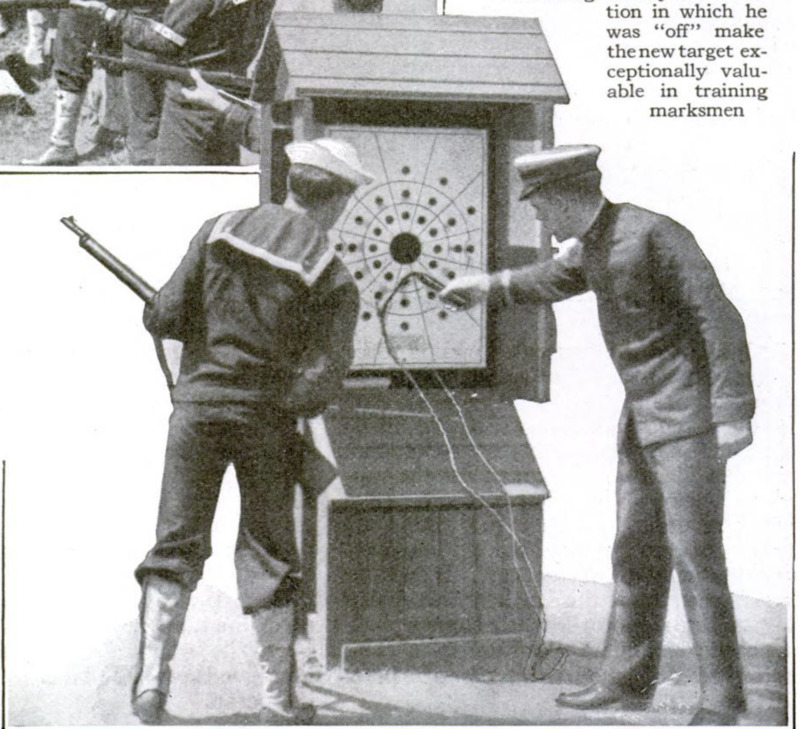Saving Steps at Target Practice
Item
-
Title (Dublin Core)
-
Saving Steps at Target Practice
-
Article Title and/or Image Caption (Dublin Core)
-
Saving Steps at Target Practice
-
caption 1: The electric target of steel is
shown on the right. The
bulls-eye is black and the
outer circles are set behind it,
in lapping arc-shaped leaves. |
When a shot hits, an electrical |
contact is closed and indica- |
tors show automatically the
exact section of the target |
where the shot struck thus
rendering it unnecessary to
post men at the target to sig-
nal back the hits
caption 2: As each shot is fired, the elec-
tric contact registers, and the
marksman can see at once not
only in what ring he struck,
but whether it was to the
right, left, above or below the
bulls-eye, so that he can cor-
rect his range or his aim tosuit.
The interest which is thus
aroused and the greater
advantage to the marksman
in knowing exactly the direc-
tion in which he
mn was “off” make
— the new target ex-
on ceptionally valu-
- able in training
marksmen
-
extracted text (Extract Text)
-
AN electrical target that signals the
exact accuracy of the marksman to
an indicator on the firing line has been
installed on the shooting range of the
United States marines at San Francis-
co, Calif. The method of signaling the
accuracy of shots which is now employed
on nearly all government ranges is not
at all satisfactory, as it is difficult to con-
vey to the man on the firing line the
explicit information of the closeness of
his shot to the bull's eye.
An elaborate system of flag and disc
signalling is usually employed. This re-
quires, at least on the long distance
ranges, the use of field glasses. \Vhen
the marksman fires a shot at a target,
the “spotter” in the distant pit lowers
the target and raises a signal to denote
the numerical accuracy. A white disc
denotes a bull's eye; a red flag, a miss,
with other emblems to denote whether
the bullet pierced ring No. 4,3 or 2.
« This procedure requires a large corps
of men both in the pits as spotters, and
on the range behind the individual
marksman, as scorers. Moreover, it is
confusing, and there is no satisfactory
way of signalling whether the bullet
which missed the bull's eye went too far
to the left or right; too high, or too low.
The electrical target, as it is called,
corrects a great many of these faults,
although its installation cost is consider:
ably higher. Tn appearance, it resembles
a number of large ventilating fans su-
perimposed one upon the other, each one
smaller than the one beneath it. The
bull's eye is a thick metal disc, painted
black, which extends in front, of the
blades. Steel plate is used in the con-
struction. Behind the plates are elec-
tric contacts.
On the firing line is an electric indi-
cator, which, in design, is a replica of
the target. Fach leaf of the target is
represented by a ‘miniature electric lamp
on the indicator. When a bullet strikes
one of the blades of the target, the con-
tact made closes an electrical circuit con-
sisting of batteries, a cable to the in-
dicator and one of the lights on the in-
dicator, The action is immediate, the
marksman knowing instantly not only
his score but the exact place on the tar-
get where the bullet struck, so that he
can adjust his rifle sights to conform
with wind and temperature conditions.
The target and indicator are marked to
resemble a clock face, following a long
established practice on rifle ranges.
-
Language (Dublin Core)
-
eng
-
Date Issued (Dublin Core)
-
1916-01
-
pages (Bibliographic Ontology)
-
94-95
-
Rights (Dublin Core)
-
Public Domain (Google digitized)
-
Archived by (Dublin Core)
-
Filippo Valle
-
Alberto Bordignon (Supervisor)
 Popular Science Monthly, v. 88, n. 1, 1916
Popular Science Monthly, v. 88, n. 1, 1916







